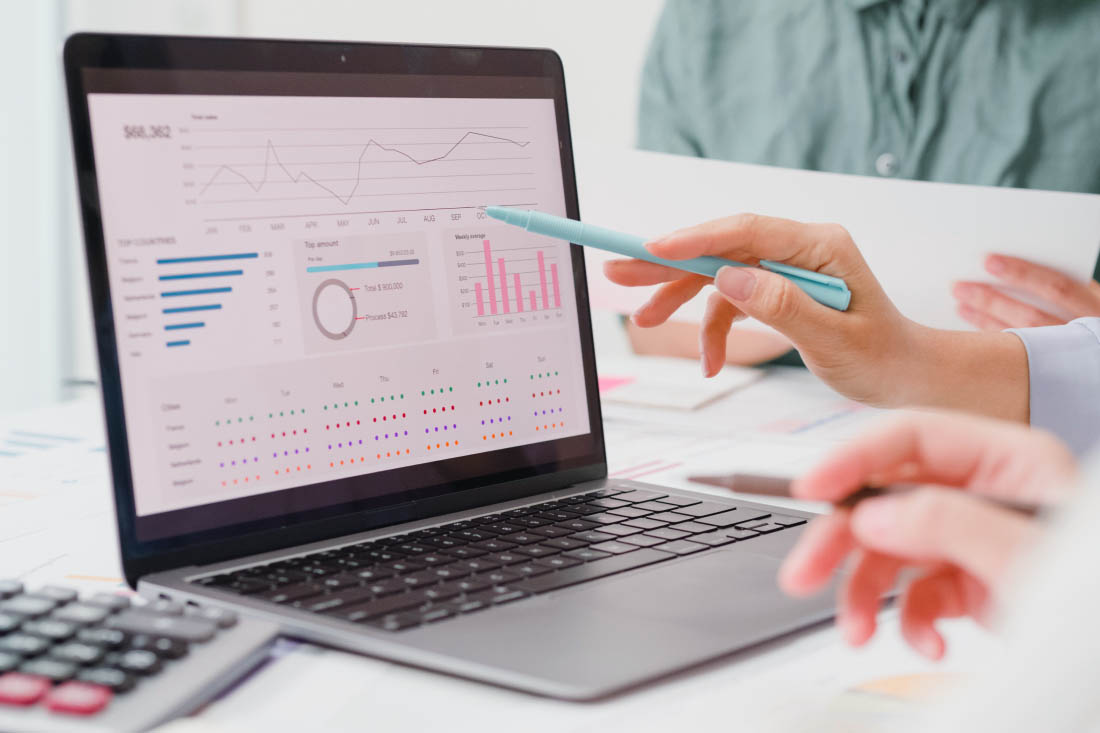In today’s increasingly competitive business landscape, you need new ways to stay ahead. Or, more specifically, to create a workplace culture where employees perform well and innovate fast. What’s the best way to do that? Use employee monitoring data.
A strong employee monitoring program allows you to optimize workflows and increase engagement. It not only empowers managers to promote well-being, but also helps entire organizations build thriving cultures.
In this article, we explore some quick, easy methods for using employee monitoring data to create a more productive, engaged workforce — and to drive meaningful change for your business.
What types of employee monitoring data should you gather?
First things first: The goal of employee monitoring systems is not to monitor employees.
You don’t need to look at employees’ personal data or track their every move. Instead, collect just enough information to foster a highly productive workforce. You can do this by using a privacy-first employee monitoring platform like ActivTrak, which is designed to collect the data you need to support productivity — no more, no less.
For example, it’s a good idea to collect information on:
- Computer Activity: Gathering data on the websites and social media platforms people visit makes it easy to see when it’s time to block certain URLs or enforce compliance with internet usage policies.
- Application Usage: Understanding which apps employees use most, and which ones they don’t, provides the insights you need to reduce SaaS costs and optimize your tech stack.
- Productivity: Tracking work hours and related metrics, such as the amount of time spent on productive activities versus busywork, lets you know when it’s time to address issues.
- Engagement: Regularly analyzing employee engagement data is a great way to prevent burnout, protect focus time and ensure healthy workload balance.
- Location Insights: Seeing where people work, and where they work best, allows you to optimize flexible work policies and calculate office space utilization.
- Capacity: Collecting information on workloads across teams and individuals lets you know when people have untapped capacity so you can optimize your headcount investments.
But you should stay away from:
- Keylogging: Keylogging, or keystroke logging, records the keys employees type on their keyboards. This practice provides little (if any) business value and increases your risk of data breaches since keyloggers collect passwords, bank account information, private messages and credit card numbers.
- Live video surveillance: Monitoring remote work by requiring employees to stay on live video feeds sends the message you don’t trust employees. It also causes unnecessary stress that ultimately hinders work performance.
- Personal conversations: Storing recordings of personal calls, emails and messages isn’t just bad practice — it may also expose you to costly Electronic Communications Privacy Act (ECPA) penalties. Generally speaking, any data monitoring that fails to protect employees’ personal privacy is a bad idea.
How to collect employee monitoring data
The best way to understand how employees work — and how they work best — is to use employee monitoring tools. With a platform like ActivTrak to do the heavy lifting for you, your biggest task is to look at easy-to-use dashboards on a weekly, monthly or quarterly basis. Unlike the information you’d get from employee surveys, one-on-one meetings and general observations, these reports are based on real-time employee activity data. There’s no guesswork involved, and no manual steps required.
8 ways to use employee monitoring data
Once you implement monitoring with ActivTrak, you’ll discover all kinds of ways to put your employee activity data to great use. Here are eight ideas to get you started.
1. Find and remove process bottlenecks
Every aspect of your business involves a process, whether it’s to onboard employees or address IT support tickets. But if people add too many steps, those processes get complicated and confusing. Use employee monitoring data to quickly identify any underlying bottlenecks, such as too many meetings that slow things down, to get things back on track. It’s an easy, effective way to start a process improvement strategy that supports innovation.
2. Identify and encourage productive behaviors
Do you know what makes for a high-performing employee at your organization? With employee monitoring software, you will. ActivTrak shows you which tools employees use, how they spend their time and what kinds of hours they work. This makes it easy to identify the characteristics of top performers so you can use this data to mentor others. For example, if you see your strongest employees spend large chunks of time on deep work, you’ll know to implement a “no meeting” Fridays policy to help others do the same.
3. Find and fix unbalanced workloads
For an easy way to promote more innovation and creativity, use your employee monitoring data to analyze workloads. When tasks and assignments are evenly distributed across team members, it’s much easier to stay focused and produce high-quality work. But if some people carry too much of the burden — and if others don’t have enough work to stay engaged — burnout is bound to follow. ActivTrak assesses all this for you, making it easy to see when it’s time to redistribute unbalanced workloads.
4. See and address the early signs of burnout
As a business leader, it’s your job to spot, assess and address burnout as soon as it starts to rear its head. But too often, the signs are easy to miss. ActivTrak helps by detecting disengagement based on real-time data. You’ll see when productivity dips, utilization goes up and focused time goes down — all the indicators an employee or team needs more support. These reports empower you to address issues before they become bigger problems, ensuring a healthy, happy work environment.
5. Get more from your software purchases
Most organizations pay for more SaaS apps than the workforce really needs. And in some cases, that overspending is significant. That’s why ActivTrak monitors application usage — so you know which tools employees actually use and which ones they don’t. This data makes it easy to reduce unnecessary SaaS costs and redirect your budget, ensuring you get as much ROI as possible from your technology stack.
6. Fine-tune flexible work policies
Are people more productive when they work from home, in the office or a mix of both? The answer often differs from day to day and team to team. With ActivTrak’s location insights, you’ll see who works best in which environment — and when. This data is an excellent way to improve your flexible work policies based on real-world employee performance and preferences. And on days when employees work from home, real-time employee monitoring data shows you when it’s time to add additional security measures and reduce compliance risks.
7. Optimize your talent
Everyone knows how important it is to find the right person for each role. But are you taking steps to ensure your existing employees build more skills and expertise over time? Talent optimization allows you to do just this. And with employee monitoring data, it’s easy to execute. Simply use your employee activity data to revamp your hiring process, expand career development programs and design workplace policies based on how, where and when your people work best. It’s one of the most effective methods for achieving higher revenue growth.
8. Improve data protection
Whether a team member falls for a phishing attack or a former employee steals proprietary documents, the consequences of a data breach are costly. And with today’s cyber attacks more sophisticated than ever, no business is immune. It’s more critical than ever to keep a close eye on how employees handle sensitive information. ActivTrak provides visibility into how people use your data on a day-to-day basis. This makes it easy to spot suspicious activity so you know when to investigate further and take extra steps to protect company data. You can even set up automated alerts that trigger when an employee performs a risky action, like visiting an unsecure site or clicking a link from a questonable email.
Start using employee monitoring data today with ActivTrak
Ready to transform your organization with employee monitoring data? ActivTrak provides a comprehensive suite of tools to help you manage and optimize your workforce in new ways — whether employees work in the office or remotely. More than 9,500 customers use it to guide important decisions and create a more productive, engaged workforce. Get a demo for a behind-the-scenes look and learn how you can get started with a free account today.





